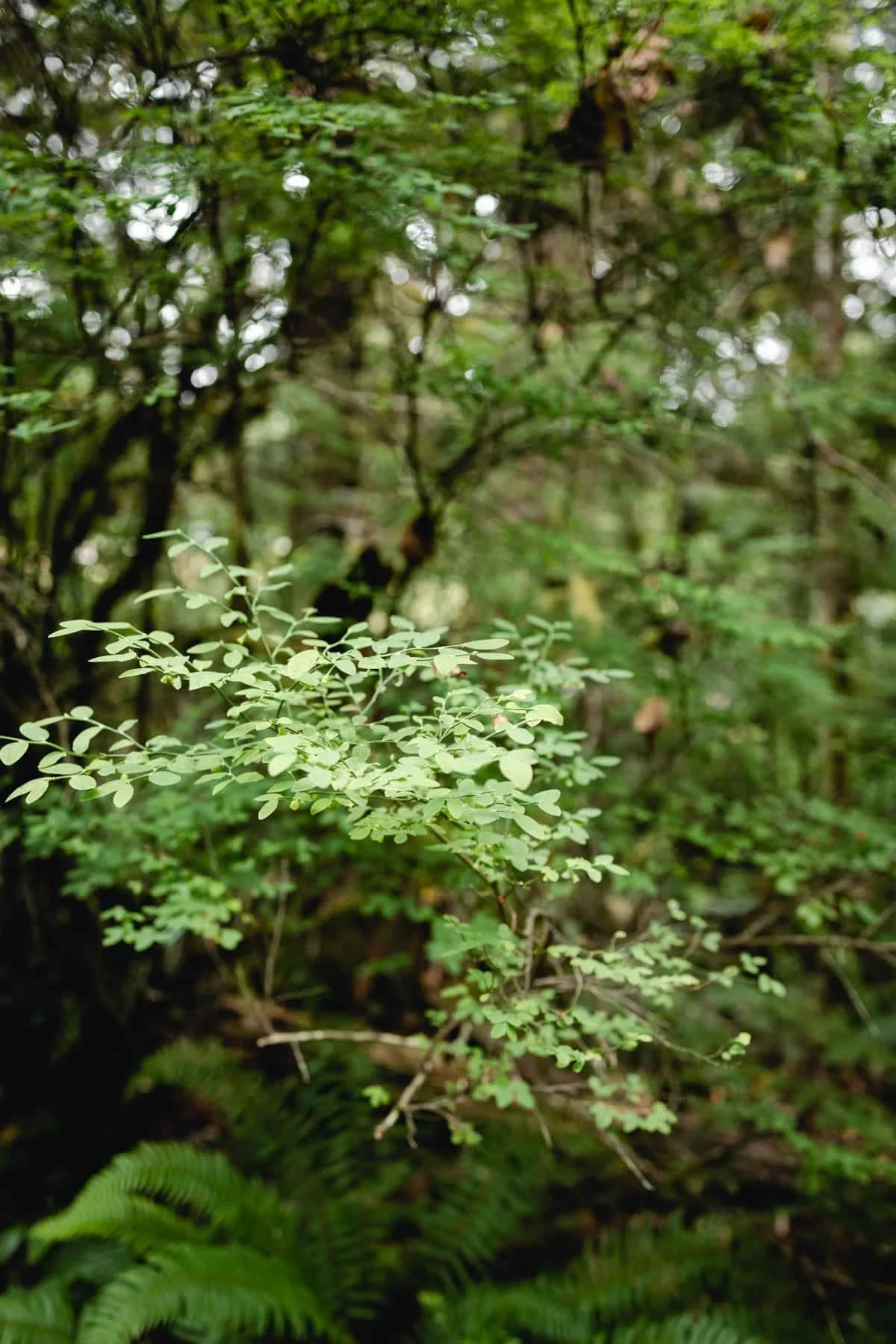All About Red Huckleberry (Vaccinium parvifolium)
The red huckleberry (Vaccinium parvifolium) is a vibrant shrub native to the Pacific Northwest, known for its sweet, red berries and cultural significance. Thriving in shaded forests, it offers ecological benefits and a delicious connection to the region's natural heritage. Whether wild-foraged or garden-grown, these berries are a cherished taste of the PNW.
About Red Huckleberry
The graceful red huckleberry is a commonly seen Northwest native. A deciduous shrub with bright green leaves and bright red berries, this particular species loves to grow in decaying stumps, logs, and bark. It makes a great companion plant to many conifer trees.
The red huckleberry is less abundant than the evergreen huckleberry in Western Washington. However, it is the dominant huckleberry species along the Oregon Coast. One of the best parts of living in the Pacific Northwest is stumbling upon a huckleberry bush in the middle of summer. Its fruit glistens like a jewel, tasting sweet yet mild like a blueberry. With each berry you eat, there is always a moment of deep appreciation for the simple joys of life.
Unknown to many, red huckleberry can also be grown and cultivated in a native plant, ornamental, or permaculture garden. This offers a delicious harvest and a connection to the region's rich ecological history. Whether wild-foraged or nurtured in your woodland garden, red huckleberries are a cherished fruit of the PNW’s natural abundance.
Characteristics and Growth Habits
Red huckleberries thrive under the canopies of large conifers and tucked within lush undergrowth in the shaded forests up the Pacific coast from central California through Oregon, Washington, and southeast Alaska. They’re considered an understory shrub, standing on average between four and ten feet tall at maturity, with slender stalks lined with hundreds of oval-shaped leaves. Red huckleberries prefer the rich dark brown and red soil of mature forests, drawing most of their nutrients from decaying materials. This makes their preference for soil acidic and as humus-rich as possible.
While they can tolerate some direct sun, they truly flourish in the bright spaces between evergreen boughs with a lot of indirect light. Their growth and fruit production amidst so much shade is quite impressive and very promising for gardeners with shadier and wet site conditions.
Flowering and Berry Production
In the heart of spring, this native shrub bursts into bloom, popping with creamy-pink flowers that almost look like lanterns or urns. The flowers look very similar to a salal bush or bleeding heart plant. As the days grow longer and warmer and the bees have made their way, the flowers give way to plump, crimson-colored berries, each bearing a distinctive circular indent on its base. From late Spring through August, these berries ripen to perfection, doubling in size and transforming into a jewel of nature. A mature red huckleberry bush in optimal conditions can produce an abundant harvest.
Cultural Significance and Traditional Uses
Like the evergreen huckleberry, red huckleberries have been an important fruit of the Pacific Northwest for centuries. Indigenous peoples across the coastlines of California, Oregon, Washington, and up to Alaska and British Columbia have harvested and utilized the berries and leaves from ancient times, incorporating them into traditional foods, medicines, and cultural ceremonies.
The berries themselves are high in antioxidants, Vitamin C, B, and potassium. They were also mashed into cakes, dried like raisins, or stored in oil. The berries also made for excellent fish bait. The juice was used as a mouthwash and to encourage a healthy appetite. The bark and leaves were also used to treat soar throats and inflamed gums.
Today, both evergreen and red huckleberries are celebrated for their unique flavor and put into a variety of recipes such as jams, pies, preserves, and sauces.
Incorporating Red Huckleberry in Your Garden
Incorporating Red huckleberry into the garden is an exciting way to get a lot of unique fruit that can be eaten raw and made into many different delicious recipes. However, there are a few important things to consider before planting them. Firstly, like the evergreen huckleberry, red huckleberry grows very slowly, sometimes taking up to 5 years to produce fruit. In comparison, a raspberry usually takes about 2 years. So, when planning your garden, one way to offset this slow growth rate is to interplant with faster-growing edible or native shrubs that will naturally fill in the space while you wait for your huckleberries to mature.
Additionally, huckleberries like very acidic soil, around 4.5-5.5 pH. Most soils in the PNW are acidic due to our history of coniferous forests. Wood chips are naturally acidic, so amending your soil with a 2-4” layer of wood chip mulch 1-2 times per year is an excellent way to build soil fertility and raise your pH over time.
From an ecological perspective, red huckleberries serve many functions, including creating habitat nooks, encouraging native pollinators, covering bare soil, providing food sources for wildlife, and fixing nitrogen through symbiotic relationships with soil microorganisms. Always plant them in the shade with dappled sun and indirect light, and plant them in guilds with other supporting native or food-producing plants. Once your bushes are mature and start to produce a lot of fruit the abundant harvest can be enjoyed by humans as well as promoting biodiversity in your local area.
Final Thoughts
Whether you’ve decided to include red huckleberry in your landscape design with us, or you happen to stumble upon a grove of red huckleberry bushes while out on a hike, red huckleberry is truly a special plant that is delicious, mild, and sweet. On top of its many ecological functions, it has several culinary uses, from jams to savory sauces, that can continue to be passed down for generations. We hope you can enjoy this PNW classic as much as we do!
Check out our native plants gallery to see more photos.






